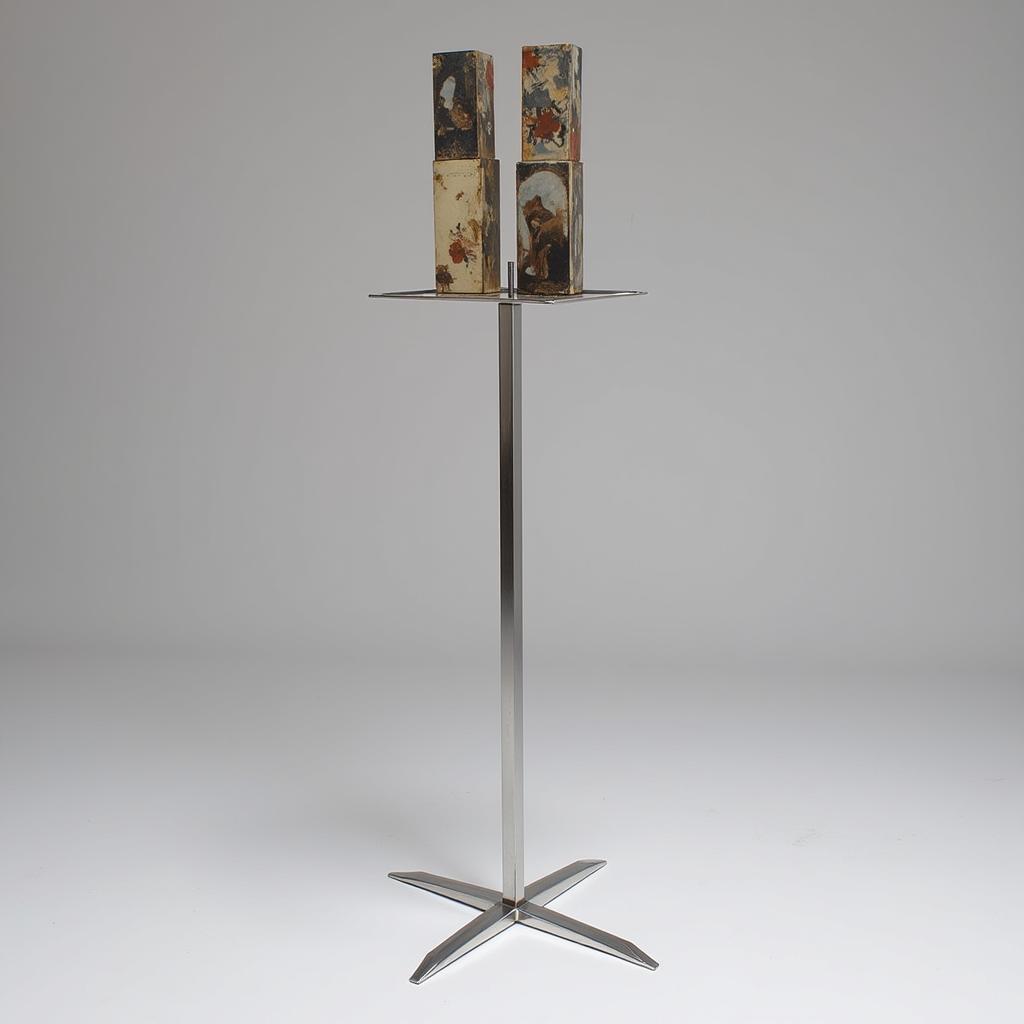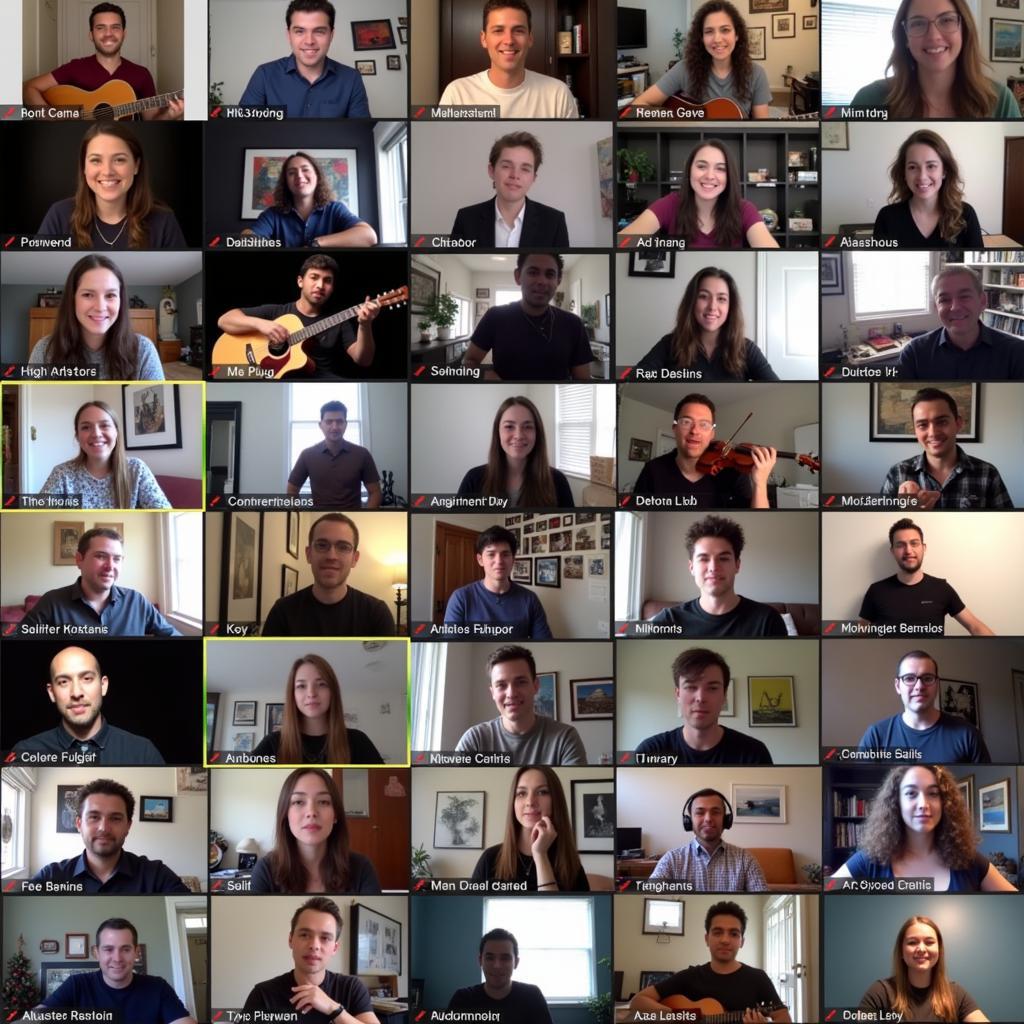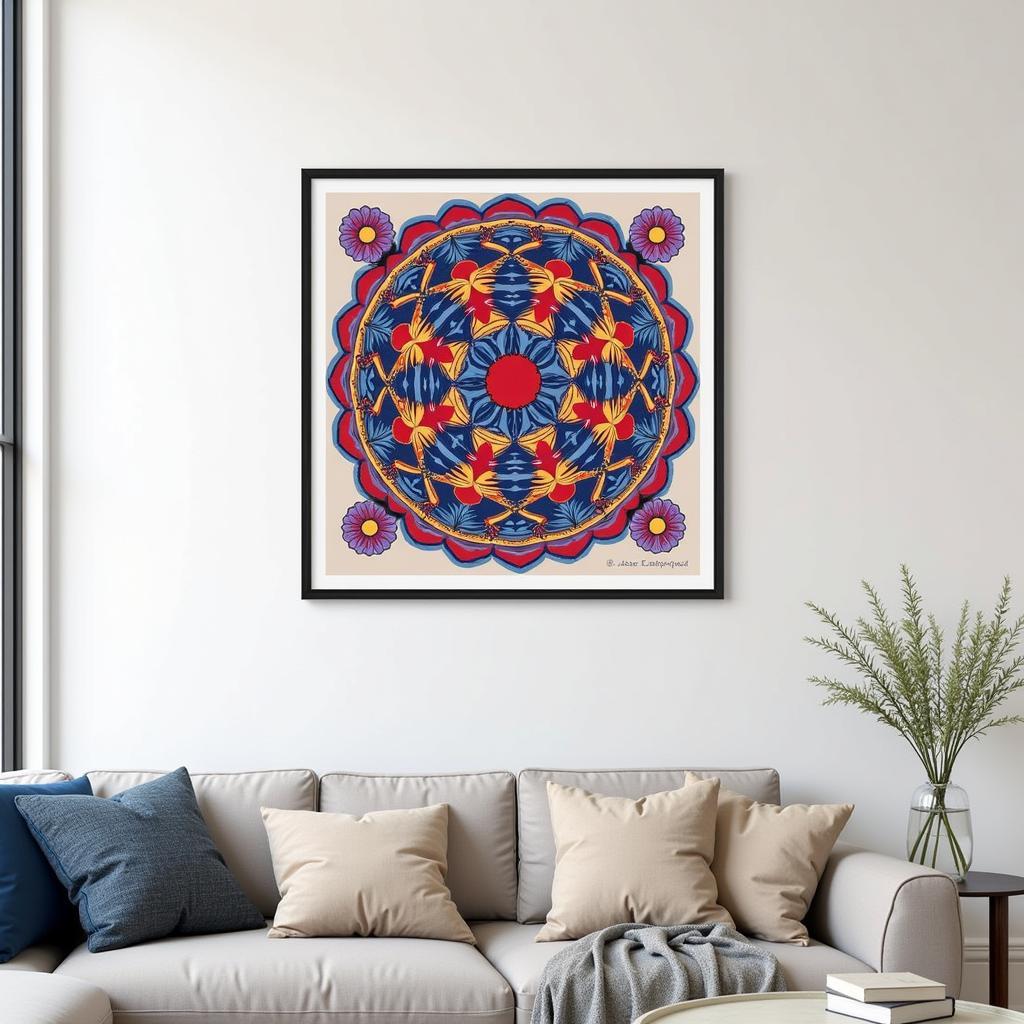Medieval Art Angels: Divine Messengers in Earthly Forms
Medieval Art Angels are more than just beautiful figures with wings. They are powerful symbols of faith, hope, and divine intervention, reflecting the theological and artistic sensibilities of a bygone era. From the soaring heights of Gothic cathedrals to the illuminated pages of precious manuscripts, these celestial beings captivated the medieval imagination, offering a glimpse into the realm of the divine.
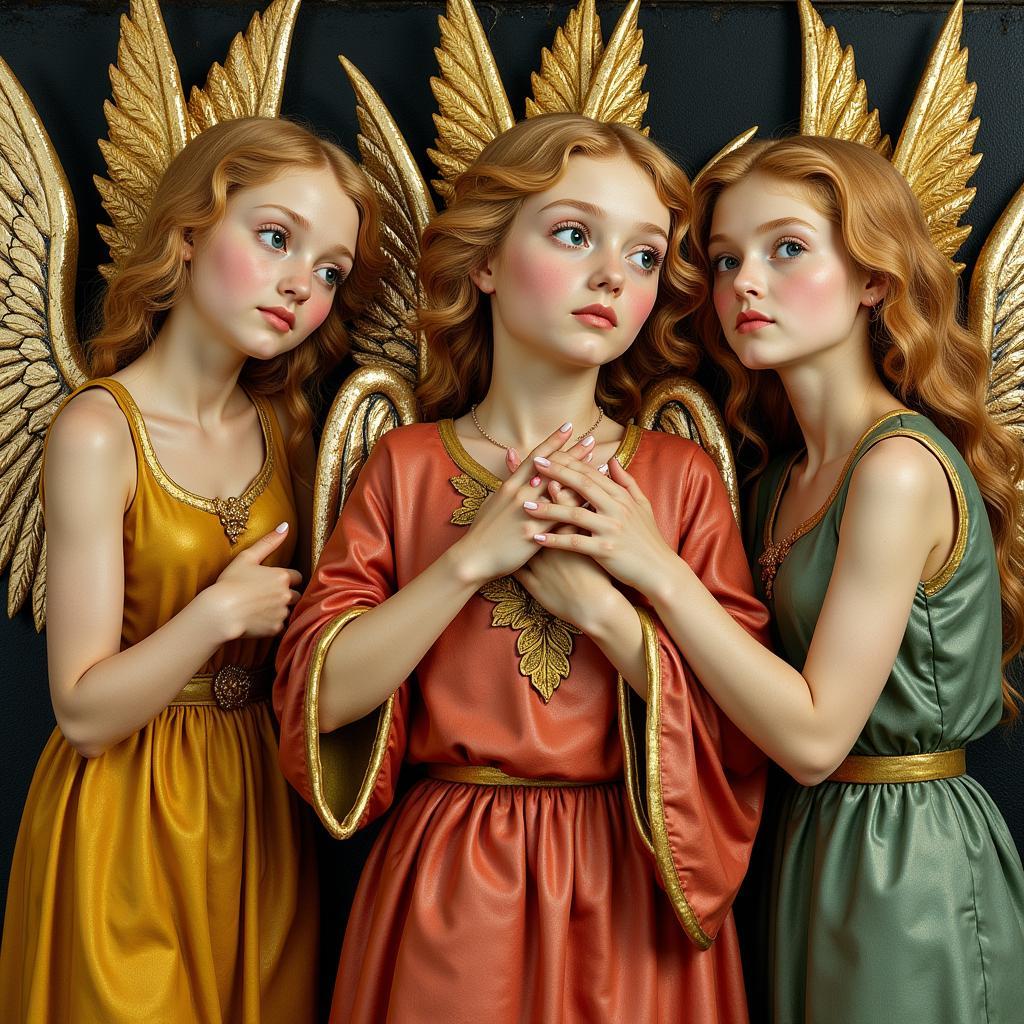 Medieval Angels in Art
Medieval Angels in Art
The Role of Angels in Medieval Theology
Angels played a crucial role in medieval Christian theology. They were seen as intermediaries between God and humanity, delivering messages, protecting the faithful, and carrying out divine will. This belief is deeply rooted in biblical texts, where angels appear throughout both the Old and New Testaments. The hierarchy of angels, with archangels like Michael and Gabriel holding prominent positions, further fueled the medieval fascination with these celestial beings.
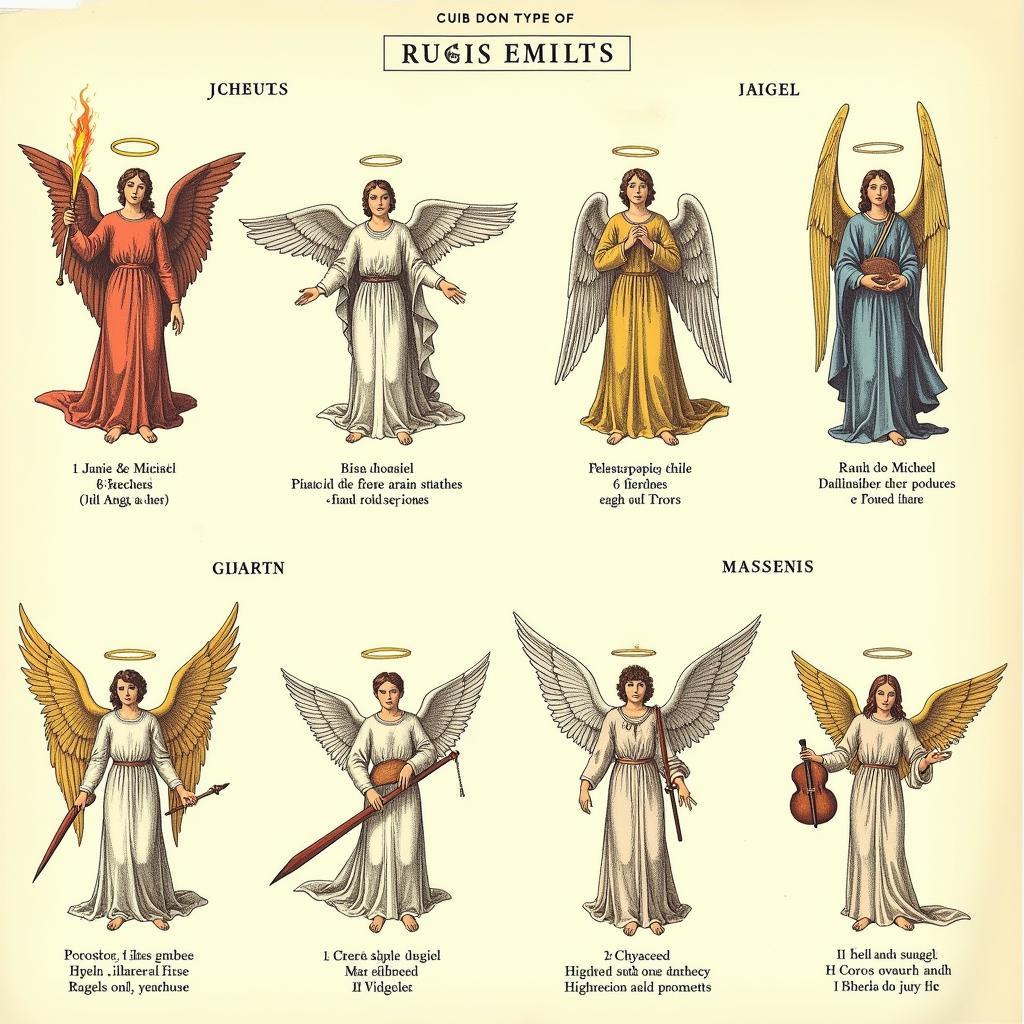 Types of Angels in Medieval Art
Types of Angels in Medieval Art
Depicting the Divine: Characteristics of Medieval Art Angels
Medieval artists faced a unique challenge: how to portray the ethereal beauty and spiritual power of angels in a tangible form. The result was a fascinating blend of realism and symbolism. Angels were often depicted with youthful, idealized features, emphasizing their otherworldly perfection. Their large, feathered wings, inspired by birds found in nature, symbolized their ability to transcend earthly limitations.
The use of color also played a significant role in depicting angels. White, representing purity and holiness, was frequently used for their robes. Gold, often used for their halos, symbolized their divine nature and proximity to God. Other colors, like blue for faithfulness or red for martyrdom, further enriched their symbolic meaning.
One striking example of this artistic representation is found in the awe-inspiring depiction of angels in 7 trumpets art. The artists masterfully conveyed the power and majesty of these celestial beings, capturing their essence in a way that continues to resonate with viewers centuries later.
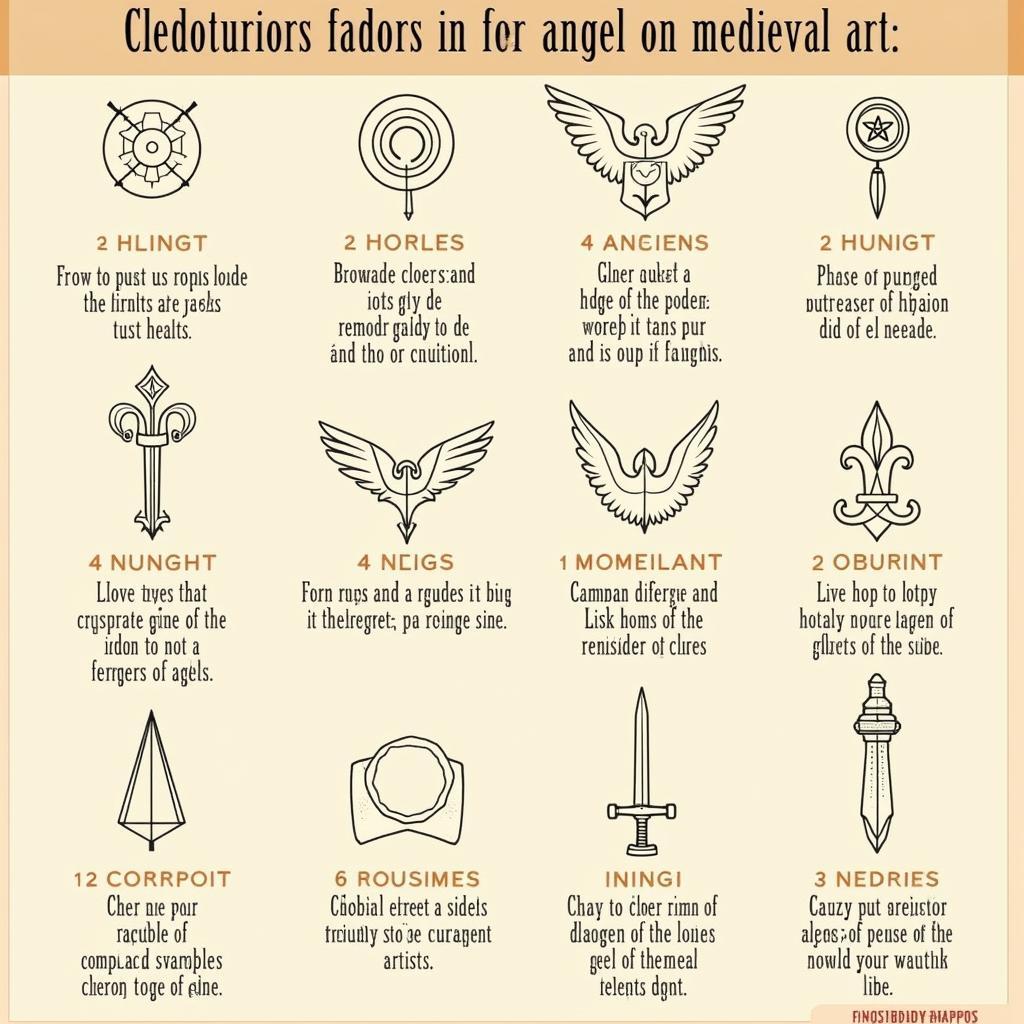 Symbolism of Angels in Medieval Art
Symbolism of Angels in Medieval Art
Beyond the Iconography: The Human Side of Angels
While medieval art angels often embodied divine attributes, they were not devoid of human characteristics. Artists often portrayed them with expressions of joy, sorrow, and even anger, reflecting the full spectrum of human emotion. This humanization of angels made them more relatable to medieval viewers, strengthening the emotional connection between the earthly and the divine.
The depiction of angels in catholic nativity art exemplifies this human element. Here, angels are not merely celestial observers but active participants in the Christmas story, their expressions conveying tenderness, awe, and a deep connection to the unfolding events.
The Enduring Legacy of Medieval Art Angels
The images of medieval art angels continue to inspire and captivate us today. They remind us of the enduring power of faith, the beauty of the divine, and the enduring human desire to connect with something larger than ourselves. From museum exhibits to art history books, these celestial beings continue to spark our imagination, inviting us to contemplate the mysteries of the spiritual realm.
FAQ
1. What is the significance of angel wings in medieval art?
Angel wings, often depicted as large and feathered, symbolize their ability to transcend earthly limitations and act as messengers between heaven and earth.
2. What are some common symbols associated with medieval art angels?
Common symbols include halos (representing holiness), trumpets (announcing divine pronouncements), lilies (symbolizing purity), and swords (representing divine justice).
3. Did medieval artists depict angels with emotions?
Yes, despite their divine nature, angels were often portrayed with a range of human emotions, making them more relatable and strengthening the emotional connection with viewers.
4. Where can I see examples of medieval art angels?
You can find them in museums, churches, illuminated manuscripts, and art history books. Many online resources also offer a glimpse into the fascinating world of medieval art angels.
5. Why are medieval art angels still relevant today?
They continue to inspire and captivate us, reminding us of the enduring power of faith, the beauty of the divine, and the human desire to connect with something larger than ourselves.
Need Help Navigating the World of Art?
For assistance with art inquiries, contact us at:
Phone: 02462573573
Email: [email protected]
Visit us at: Savico Megamall, 7-9 Đ. Nguyễn Văn Linh, Gia Thụy, Long Biên, Hà Nội 10000, Việt Nam.
Our team is available 24/7 to assist you.
Explore more intriguing art topics on our website!
Interested in delving into the darker side of religious art? Discover thought-provoking pieces in our collection of dark religious art.
